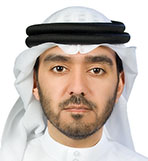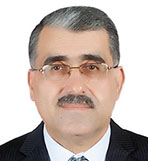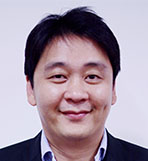There is a pervading belief in the HVAC industry that pursuing energy efficiency would entail sacrificing the quality of indoor environments and vice versa. But how valid is this belief, and what is perpetuating it? Are attempts at achieving a balance between energy-efficiency goals and IEQ requirements really nothing more than exercises in futility? By […]
There is a pervading belief in the HVAC industry that pursuing energy efficiency would entail sacrificing the quality of indoor environments and vice versa. But how valid is this belief, and what is perpetuating it? Are attempts at achieving a balance between energy-efficiency goals and IEQ requirements really nothing more than exercises in futility?
By Fatima de la Cerna | Assistant Editor

In June of this year, CPI Industry, publishers of Climate Control Middle East, held the 8th edition of The Climate Control Conference. The two-day event comprised an 82-topic agenda covering issues pertinent to all phases of construction. Two of those issues were energy efficiency and Indoor Environmental Quality (IEQ). Such was their relevance to the discussions that participants brought them up repeatedly during the course of the event, either as topics independent of the other or as a part of it.
Among those who painted both as linked components of a green built-environment was Jagath Gunawardena, Senior Manager for Projects and Building Development at the Dubai Chamber of Commerce and Industry. When asked to talk about the Dubai Chamber headquarters, widely lauded as a model of sustainability, Gunawardena revealed that the Chamber is enjoying not only energy savings but also high levels of staff satisfaction. He attributed the latter to good IEQ.
“People love to work in the organisation,” he said, “which means their output needs to be looked at as part of sustainability. The focus should not be limited to energy savings, because that would only mean cutting off the waste. Occupant comfort has to be maintained, because it’s important for people to be happy and healthy. Occupants should not be constantly reminded, by the quality of their indoor environment, that there is an active energy savings programme.”
A conundrum
Considering the accolades Gunawardena has received for his efforts to elevate Dubai Chamber headquarters to its current iconic status as the first building in the Gulf region to be awarded the LEED certification for Existing Buildings, there is no doubt that he knew what he was talking about when he endorsed aiming for both good IEQ and energy efficiency.
But is it an easy goal to achieve? Going by the pervasive industry sentiment that pursuing one would involve sacrificing the other, the answer would be ‘no’. In fact, Charles Blaschke, General Manager of taka solutions, voiced this exact sentiment when he spoke during the June conference. “When we start to operate a building and try to save energy, there is a big conundrum,” he said. “And that is the balance between IEQ and energy [efficiency]. I think everyone knows that you either get good energy performance or good IEQ. To balance the two is very hard.”
Moving in different directions?

Brian Suggitt, Managing Director (Middle East) of Systemair
On why achieving this balance is such a challenge, Brian Suggitt, Managing Director (Middle East) of Systemair, points to an alleged disconnect between organisations pushing for good IEQ and organisations promoting energy efficiency, as one reason. “We’ve got different bodies looking at IEQ and IAQ [Indoor Air Quality],” Suggitt explains. “And different bodies looking at energy efficiency, and they are not talking with each other. We see events organised for one and the other, but not for both.”
He discloses that while there have been attempts to link IEQ and energy use in the past, he doesn’t think they’ve worked, because the two groups are working towards different goals, as separate units. “If we want to have energy-efficient buildings with healthy indoor environments, we need to find a way to get those two groups to work together and towards the same goal – a major difficulty,” he says, and goes on to add, “Those looking at just sustainable energy use outnumber the other group. IEQ and IAQ are not getting as much attention here as sustainability.”

Jordan Baker, Regional Manager – Middle East Gulf at Greenheck Fan Corporation
Jordan Baker, Regional Manager – Middle East Gulf at Greenheck Fan Corporation, makes a similar observation: “There are few players out there – consultants and contractors – who understand the importance of IEQ, which is focused on long-term benefits for building owners and occupants. Unfortunately, in the region, we continue to face the harsh reality that IEQ is valued less than fancy washbasins and door fixtures.”
Elaborating on this, he recalls how, on numerous occasions, he has experienced going into lounges that are “far too smoky to be comfortable”, to restaurants “filled with smoke and/or odour from the kitchen” or to offices “where there are only two climate options: sweaty hot or freezing cold”.
These problems, he states, can be either avoided or addressed by applying foresight to aspects of design and implementation, and with just a few extra dollars. A few extra dollars, however, can be a costly hurdle.
Money matters
Suggitt, noting that the CAPEX-versus-OPEX argument continues to be waged in the Middle East market, stresses that industry stakeholders must display acceptance of costs to be able to achieve the desired balance between IEQ goals and sustainability aspirations. “Most people,” he says, “when you present your ideas to them, will express enthusiasm about it. They’ll go, ‘That’s great. Sure, let’s do that. Wait, it costs how much? No, we’re not doing that.’ What people don’t realise is that when they invest in the building, the day they make that investment is the day they start saving money.”
Expounding on his point, Suggitt adds that one problem he has noticed in the Middle East is the presence of people who develop and sell buildings but lack real interest in them. “Their interest is a return on their investment,” he says, “but if they only thought about selling a building with all the advantages of energy efficiency and indoor environmental control, they’d realise that they may just get a higher price for it or have an easier time selling it. It’s an education process to make people accept a different kind of thinking.”
From a different angle

Jasim Mohamed Al Ali, Acting Head of Internal Conformity at the Conforming Affairs Department of ESMA
A change in perception, Jasim Mohamed Al Ali believes, is exactly what people need, and acknowledges that current interest and efforts are skewed in favour of sustainability at the expense of IEQ – a situation that ESMA is working towards correcting. “When we compromise in one area,” Al Ali, the Acting Head of Internal Conformity at the Conforming Affairs Department of ESMA, says, “we are basically going around in circles, for any compromise we make today, we will pay for later. Balance should, therefore, be the end goal. Good IEQ and energy efficiency should run parallel to each other. They should be in sync. You cannot have one without the other.”
When asked to elaborate on this, Al Ali answers: “If energy-efficiency measures do not serve the interests of your indoor environment, then you are not actually being efficient. Efficiency means harmony and equilibrium, and that’s what we at ESMA are trying to do – achieve equilibrium. Why? When we speak about IEQ, for instance, we talk about air quality, lighting and temperature, but we also talk about noise and energy. Science tells us that for noise to be generated, energy must be converted to sound, which means that if an AC unit is noisy, some of its power, some of its energy is being converted to noise. That’s not efficiency. The same thing can be said of lighting. A lamp that generates a lot of heat is consuming power to do that, and it should go without saying that heat also affects the room environment.”
Efficiency, Al Ali emphasises, is therefore not just about how much energy is being consumed but also about how much of the energy being consumed is successfully converted into the needed end-product. He elaborates, “If people looked at the issue from that perspective, they would realise that while there will always be losses, those losses could be controlled.”
One way of controlling losses, Al Ali says, is by using products that have been tested and proven safe and reliable – an area where ESMA can help. “With regards to air quality, for example, we are checking for hazardous substances or materials in products like plastic and paint, to eliminate toxicity-induced illnesses or diseases,” he highlights.
Consumer protection
To know if a product complies with UAE standards and to determine how energy-efficient it is, Al Ali advises consumers to be guided by the conformity assessment and energy-efficiency rating schemes of ESMA. He explains that products have to pass the assessment to be granted the licence to use the Emirates Quality Mark (EQM). As for the mandatory rating system, he claims that with it in place, appliances like air conditioning units now carry labels identifying their power consumption, making it easy for consumers to choose products according to their energy-saving potential.
“The target of the UAE is to be the leader in everything,” he claims. “And that includes being a green environment. At ESMA, we are developing programmes that highlight energy efficiency, because in the end, you and me and everyone else, we are just simple consumers. Who is going to tell us what is inefficient or efficient? The seller or the factory? We need a scheme to make that information available and accessible, so we are not dependent on claims from manufacturers and will not be manipulated by false advertising.”
For products to be approved by ESMA and allowed entry into the UAE market, they have to be registered and supported by test results from credited laboratories, Al Ali says, adding: “We want to clear the market of non-compliant products, because when I say the UAE wants to lead, I mean it intends to be the number one in the world. The country has everyone’s attention now, especially Dubai, because of Expo 2020. There’s also the 2022 World Cup in our neighbour, Qatar, and several other international events that will be held in the region. We are expecting a lot of visitors to come, which means our infrastructure and our regulations must be aligned with global standards.”
Regulating the GCC region
Al Ali reveals that ESMA shares its regulations with the rest of the GCC region, in an effort to bring about harmonised standards and to make it easier for manufacturers to supply products to member countries. In the meantime, however, the rest of the GCC countries have adopted their own sets of regulations dedicated to environmental concerns.

Hassan Sultan, President of the ASHRAE Qatar Oryx Chapter
“Qatar has already established its own assessment scheme, called Global Sustainability Assessment System or GSAS,” says the former President of the ASHRAE Qatar Oryx Chapter, Hassan Sultan. “The assessment criteria take into consideration various categories related to sustainable development and its impact on environmental stress mitigation, with each criterion elucidating the requirements of reducing environmental stress. In total, GSAS assesses eight categories, including indoor environment and energy efficiency.”

Changho Lee, General Manager of the RAC Division at LG Electronics
For Changho Lee, General Manager of the RAC Division at LG Electronics, whatever standards the governments in the GCC region are adopting, he believes that they have the best intentions in mind. “I have strong belief and trust in the governments in the Gulf,” he says. “Saudi Arabia, Qatar and the UAE, especially, have very high standards designed to keep low-quality products out of the market.”
Strict enforcement – a must
High standards and regulations are of no use, though, if they are not strictly enforced and observed, Suggitt points out. “As far as regulations are concerned, we are all right,” he says. “But somebody has to enforce them, because they are meaningless if they are not implemented. And they have not been strictly implemented in the last 40 years. Nine times out of 10, contractors will do what they want to do, instead of adhering to what is required by the specifications. Without firm guidance, people will just take the routes they wish to follow.”
Lee, sharing Suggitt’s perspective, observes that ESMA’s regulations, in particular, are placing pressure on manufacturers to develop new technology and produce more efficient solutions. “To align ourselves with what ESMA is expecting from us,” he says, and reveals, “We are releasing new models in November that will offer consumers higher efficiency.”
He claims, however, that while LG and several other companies are keeping track with what is expected of them and complying with set standards, there are still cheap, substandard products from other countries that find their way into the UAE market, and cheat consumers through bogus claims. “As an industry, our primary concern should be to give consumers value for their money as well as protect the environment,” he says. “And so my expectations from ESMA are that it will carry out more inspections and will make enforcing stricter regulations a priority.”
While Baker has the same viewpoint on the need for regulations and their enforcement as Suggitt and Lee, he also thinks that the consumers or clients themselves have an important role to play.
“Clients are the key to achieving [good] IEQ and energy efficiency,” emphasises Baker. “The supporting elements to clients and consultants, meanwhile, would be requirements set forth by local codes and the efficiency requirements of each country. And while a few are currently moving to embrace both, we won’t see a major shift in the industry towards IEQ and energy efficiency until it is mandated by regulatory authorities.”
Baker also goes on to cite the Estidama Pearl Rating System of Abu Dhabi as representing “a large step forward for the region, in terms of regulation and policy towards Green Building”. He, however, acknowledges that the system is not without its faults. “Is it perfect?” he asks, and answers, “Certainly not, but what regulation is?” He explains: “The most powerful effect, for the moment, is its symbolic nature, which is that a standard has been set in place. It will, of course, be improved upon, just like ASHRAE standards have been.”
Not easy, but possible
Baker et al may be in agreement that the present state of the industry, with a market that remains preoccupied with CAPEX concerns and players whose awareness of niggling issues could be described as insufficient, makes it difficult to strike a balance between IEQ targets and energy-efficiency objectives, but they are also quick to recognise that it is not impossible to pull off.
“IEQ encompasses the overall health of an environment,” Baker says. “It can include thermal and humidity conditions, air quality, lighting, noise, design, energy consumption and natural lighting. Values from the US Energy Information Administration indicate that supplying and treating air accounts for over 60% of office building energy consumption. Lighting consumes another 17%. These power consumptions are staggering and can be significantly lowered (up to 34%) through proper design, while improving overall IEQ.”
Designing buildings around said parameters, Baker states, can result in high-quality and safe environments that would cost less than those developed using conventional construction methods. “For example, responsibly channelling natural sunlight into the building, while blocking direct sunlight rays from entering the building can make the space feel fresh and, at the same time, reduce energy used for lighting the space,” Baker says. “Another example is utilising IAQ monitors to modulate energy-efficient supply and exhaust fans according to the actual room occupancy, instead of running at a constant worst-case set point and wasting power and conditioned air costs.”
Baker also observes that, technology-wise, the HVAC industry is leaning “towards systems integration, where systems, such as lighting and HVAC [equipment] can automatically switch on and off depending on which zones are occupied”. This, he says, “could be based on motion sensors, badge scans and fingerprinting locks”.
Technology to the rescue
Expounding on the role technology plays in achieving what Al Ali refers to as the “equilibrium point,” Suggitt declares that he fully supports the idea that efficiency in energy consumption can lead to better IEQ. “Most people would look primarily at energy efficiency as opposed to IEQ,” he says. “They will rarely look at environmental quality and then see if it’s energy-efficient, as well. It tends to be one driving the other, with IEQ very much secondary. But, definitely, balance between both can be achieved, as long as you use the right products in the building.”
Air curtains, Suggitt notes, are one such product. “There’s an edict in Dubai Municipality’s Green Building Regulations that stipulates that all doors or entrance systems of buildings must be designed to prevent conditioned air from escaping the building,” he says. “That’s where air curtains come in, because revolving or automatic doors don’t necessarily do that.”
Complementing, not competing
Though Sultan concedes that technology in the form of HVAC solutions and equipment can be applied “to ensure efficiency and good IEQ in projects”, he is of the opinion that balance can be achieved by analysing how energy-saving measures affect indoor environments.
“Many actions taken to improve energy efficiency have secondary effects on the quality of the indoor environment,” he says. “These secondary effects could improve IEQ, leave IEQ relatively unaffected or degrade it, sometimes substantially. These IEQ-related effects are often ignored in the design of energy-efficiency projects, because many energy professionals believe that protecting IEQ would lead to significant energy penalties.”
He emphasises, however, that energy projects can be made compatible with IEQ without substantial energy loss and with potential gain in client satisfaction. “Much of the perceived conflict between those two comes from just two elements of an energy strategy – the tendency to minimise outdoor air ventilation rates and the willingness to relax controls on temperature and relative humidity to save energy.”
To address the conflict, Sultan proposes avoiding energy-saving activities that may degrade or compromise IEQ, including reducing HVAC operating hours, relaxing thermal control and night-time setbacks, and utilising variable air volume systems with fixed percentage of outdoor air. What he recommends in their place are energy-saving measures that are compatible with IEQ. They include: optimising on-site resources, especially natural light; reducing energy loads; utilising properly sized systems and energy-recovery technology; practising night pre-cooling; and improving the building shell.
“Energy efficiency and good IEQ, in many people’s eyes, are in competition,” says Sultan. “But, in reality, they complement each other. They are the goal of, as well as the path towards, a green and sustainable world.”
Editor’s Note: At the time of the interview, Jasim Mohamed Al Ali was with ESMA; since then, he has taken up an assignment with DEWA.
|
Copyright © 2006-2025 - CPI Industry. All rights reserved.